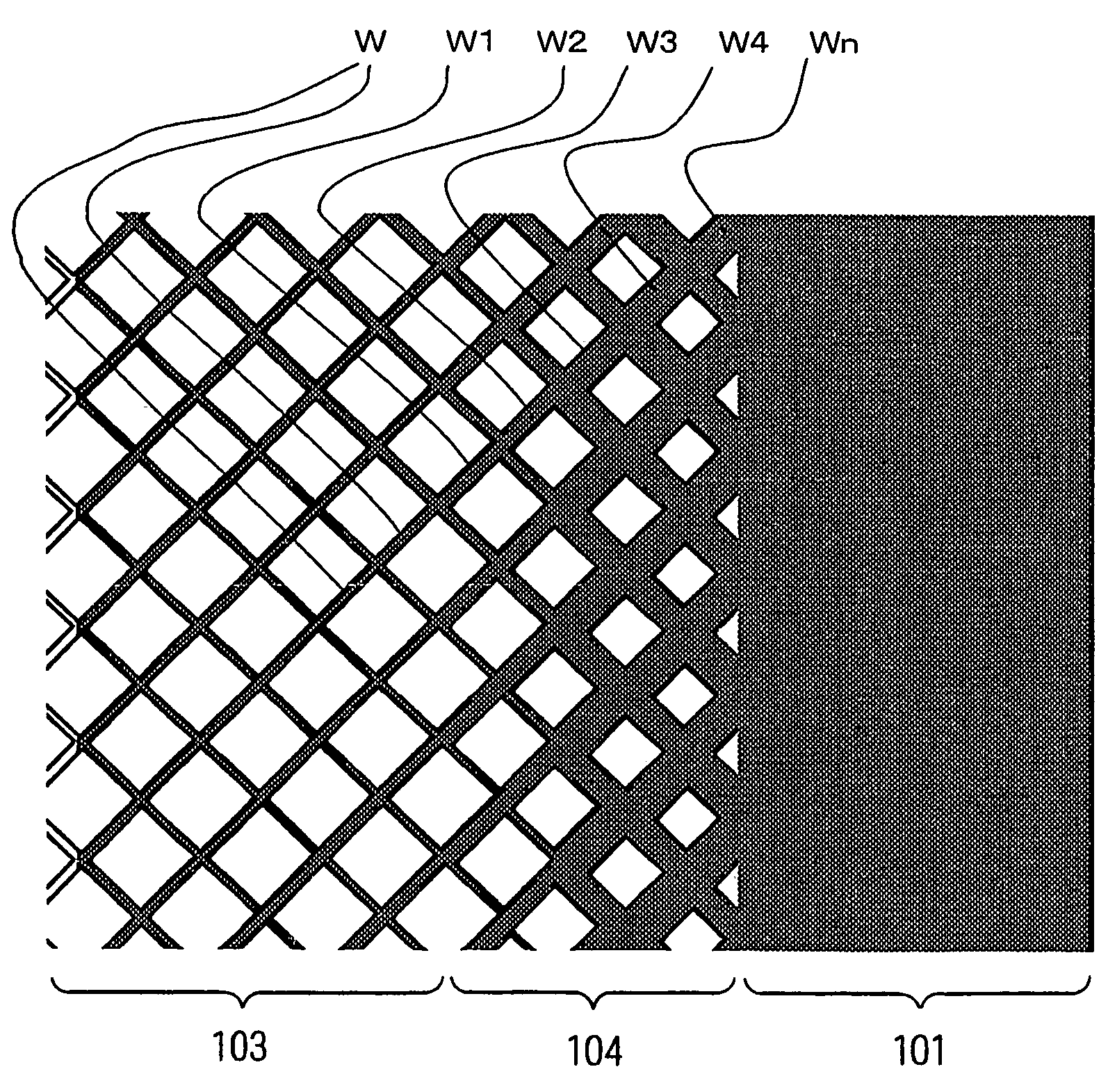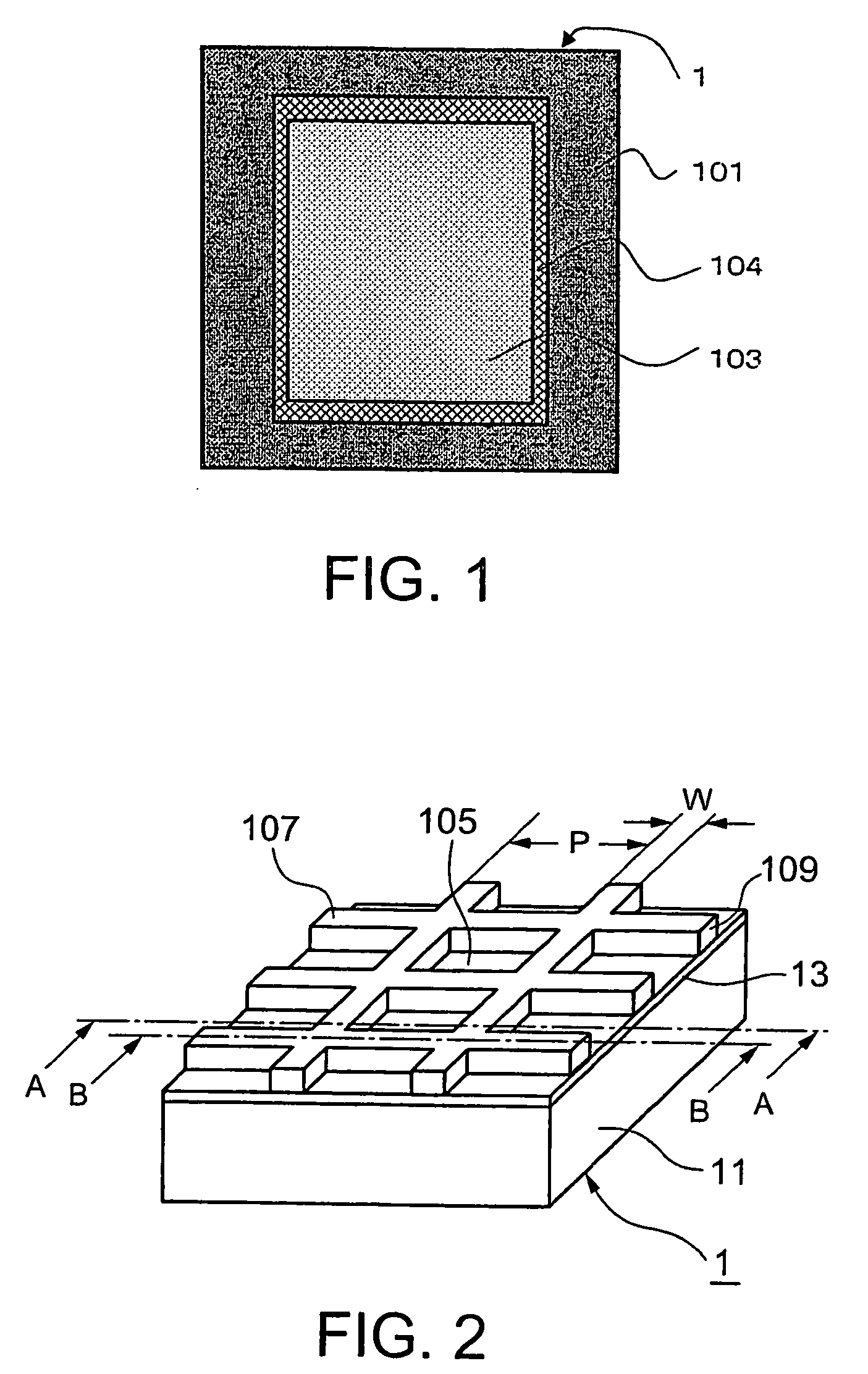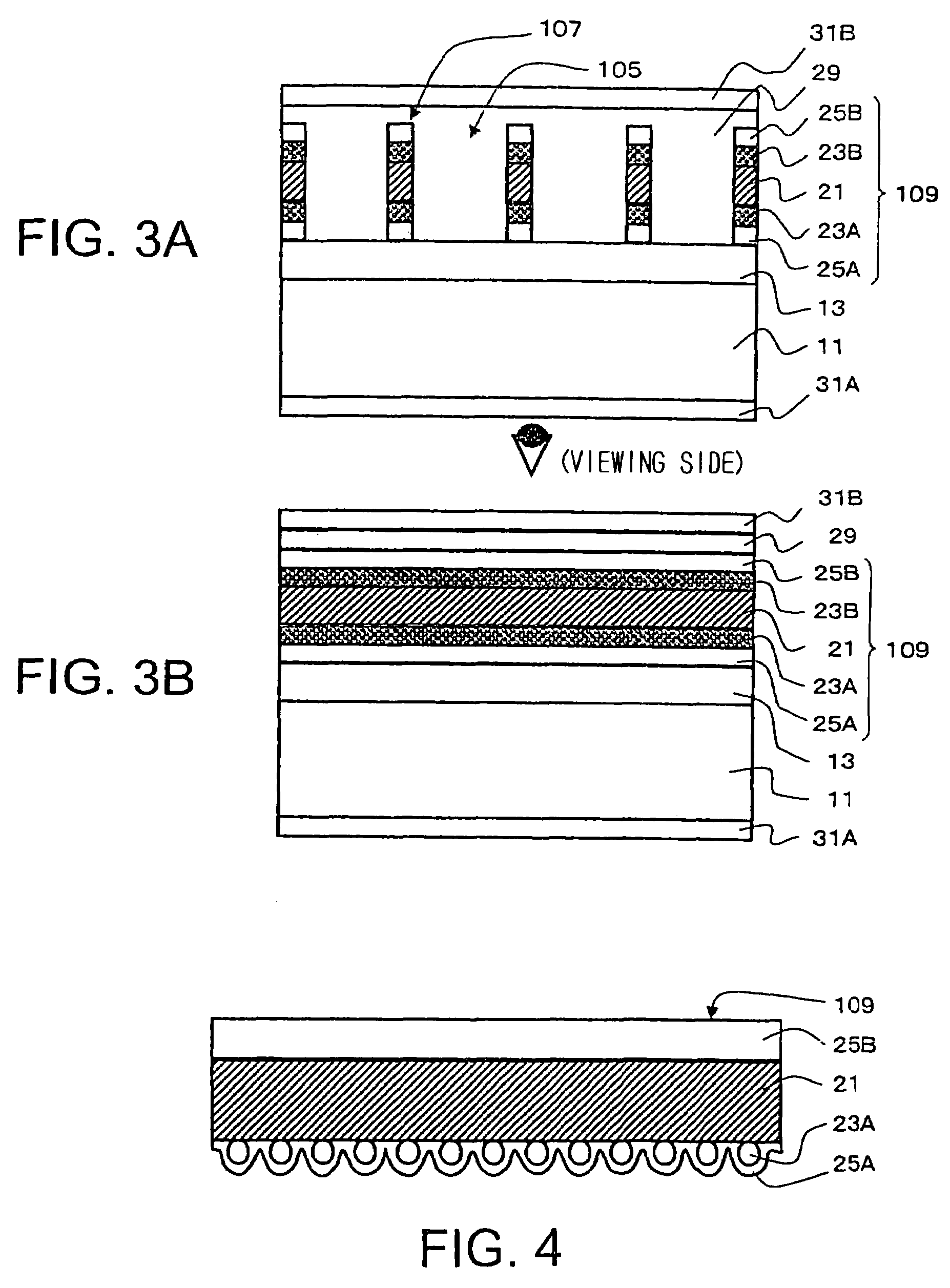Electromagnetic shielding sheet
a technology of electromagnetic shielding and shielding plate, which is applied in the field of sheets, can solve the problems of unavoidable disassembly of meshes and lines in the boundary region between the mesh part and the grounding frame, and the difficulty of handling electromagnetic shielding plate, and achieve the effect of reducing steps and man-hours of electrode connecting work
- Summary
- Abstract
- Description
- Claims
- Application Information
AI Technical Summary
Benefits of technology
Problems solved by technology
Method used
Image
Examples
example 1
[0128]A 10 μm thick electrolytic metal foil having surfaces treated by a blackening treatment using Cu—Co alloy particles having a mean particle size of 0.3 μm, and treated by a chromate treatment for forming antirust blackened layers was used as a conductive layer. The conductive layer was laminated to a 100 μm thick biaxially stretched polyethylene terephthalate film (PET film) A4300 (made by Toyobo Company, commercial name) with the chromated layer bonded to the PET film with an adhesive layer of a two-part polyurethane adhesive to form a laminated structure. Then, the laminated structure was aged at 56° C. for four days. The two-part adhesive had a polyol (Takerakku A-310, made by Takeda Yakuhin Kogyo Company) as a resin, and a polyisocyanate as an accelerator (A-10, made by Takeda Yakuhin Kogyo Company). The thickness of the adhesive layer as dried was 7 μm.
[0129]Meshes were formed in a continuous strip by a photolithographic process including steps from a masking step to an et...
example 2
[0133]An electromagnetic shielding sheet in Example 2 was fabricated by coating the mesh part and the peripheral mesh part of an electromagnetic shielding sheet identical with that in Example 1 with a planarizing layer. A planarizing composition was applied to the surface of the electromagnetic shielding sheet so that the meshes are filled up with the planarizing composition. A 50 μm thick releasable PET film (SP-PET20-BU, made by Tohsero Company) was attached to the surface of the electromagnetic shielding sheet coated with the planarizing composition, the surface coated with the planarizing composition was exposed to radiation emitted by a high-pressure mercury lamp at a dose of 200 mj / cm2 (365 nm equivalent), and then the releasable PET film was removed to smooth the surface of the planarizing layer. The ability of the electromagnetic shielding sheet in Example 2 was similar to that of the electromagnetic shielding sheet in Example 1.
[0134]The planarizing composition was prepared...
example 3
[0135]An electromagnetic shielding sheet in Example 3 was similar to that in Example 2, except that the electromagnetic shielding sheet in Example 3 was provided with a planarizing layer formed of a composition prepared by adding 1 part by mass of a thiol-nickel complex, namely, NIR-absorbing agent, to the planarizing composition used for forming the planarizing layer of the electromagnetic shielding sheet in Example 2. The ability of the electromagnetic shielding sheet in Example 3 was similar to that of the electromagnetic shielding sheet in Example 1 and was superior to the electromagnetic shielding sheet in Example 1 in effect on improving the visibility of displayed images.
PUM
| Property | Measurement | Unit |
|---|---|---|
| width | aaaaa | aaaaa |
| width | aaaaa | aaaaa |
| width | aaaaa | aaaaa |
Abstract
Description
Claims
Application Information
 Login to View More
Login to View More - R&D
- Intellectual Property
- Life Sciences
- Materials
- Tech Scout
- Unparalleled Data Quality
- Higher Quality Content
- 60% Fewer Hallucinations
Browse by: Latest US Patents, China's latest patents, Technical Efficacy Thesaurus, Application Domain, Technology Topic, Popular Technical Reports.
© 2025 PatSnap. All rights reserved.Legal|Privacy policy|Modern Slavery Act Transparency Statement|Sitemap|About US| Contact US: help@patsnap.com



